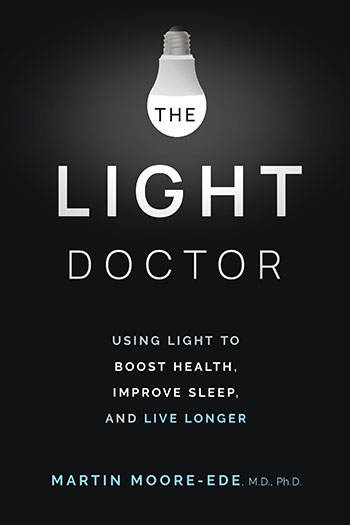A recent Circadian Light Research Center survey confirms humans are highly sensitive to blue-enriched LEDs and excessive blue-rich light leads to many major health disorders.
Each year, as people try to adjust to daylight savings:
- Heart attacks increase by 17-24%
- Older patients have 20% more strokes
- Fatal traffic accidents rise by 6%
BOSTON (February 23, 2023) When the clocks are adjusted forward for Daylight Saving Time on March 12th, over 300 million Americans will rise an hour earlier. While this may sound like a minor event, it is not. Not only will people lose sleep, but their disrupted circadian rhythms will cause many health impacts. Each year, as people try to adjust, heart attacks increase by 17-24%, older patients have 20% more strokes and a 6% rise in fatal traffic accidents. Daylight Savings plays havoc in part due to the increased exposure to indoor lighting. Changing the time people see light affects their circadian rhythm more with the increased usage of blue-enriched LEDs.
People’s exposure to light directly affects their circadian rhythms. That simple one-hour time shift during daylight saving time results in less exposure to daylight in the morning and greater exposure to evening electric light relative to typical sleep and work schedules. As a result, people tend to go to bed and fall asleep later, resulting in chronic sleep loss.
Recently, the Circadian Light Research Center released the results of a consensus survey of 248 leading scientists, which confirms that human circadian clocks are highly sensitive to blue wavelengths, and exposure to insufficient daytime blue-rich light and excessive blue-rich light at night, leads to many major health disorders.
Martin Moore-Ede, M.D., Ph.D., director of the Circadian Light Research Center and a former professor at Harvard Medical School, is the lead author on the study titled “Lights Should Support Circadian Rhythms: Evidence-Based Scientific Consensus“. It reports there was a scientific consensus on the following:
- Robust circadian rhythms are essential for maintaining good health
- Disrupting circadian rhythms can cause ill health
- Repetitive and prolonged exposure to light at night bright enough to cause circadian disruption increases the risk of breast cancer in women, increases the risk of obesity and diabetes and increases the risk of sleep disorders
Congress and many states are moving to end this yearly disruption. The US Senate voted unanimously in 2022 to leave the clocks on Daylight Savings Time year-round in the “Sunshine Protection Act.” And if approved by the House of Representatives and President, after March 12th, 2023, the clocks would never be set back to winter standard time.
But not so fast. Permanently setting the clocks earlier by an hour can have a devastating effect on health and economic well-being.
Studies involving millions of Americans living in counties located either just west or just east of a time zone boundary, show significant differences in health.
“The effects of choosing permanent Daylight Savings Time versus permanent Standard Time should not be underestimated,” said Dr. Martin Moore-Ede, director of the Circadian Light Research Center and a leading expert on the effects of light on circadian rhythms. “Living on the western edge of a time zone, where daylight extends an hour more into the evening, and daylight arrives an hour later in the morning reduces the amount of sleep people get, and increases the rate of obesity, diabetes, heart disease and breast cancer, as compared to living on the eastern side of the same time zone. If those living on the western side of a time zone just moved their home a few miles west into the eastern part of the neighboring time zone (or the time zone border was shifted eastwards), their health and economic prospects would radically improve.”
Daylight Savings and Social Jet-Lag
The light of dawn travels at over 700 miles an hour across the USA from east to west. Since the US time zones are 700 – 900 miles wide, the eastern edge of each time zone sees the first light of dawn an hour or more before dawn reaches the western edge of the same time zone. Yet people in a time zone live with the same social, school and work schedules. Extensive studies looking at the health of people living in the counties on each side of the US time zones show a consistent social jet-lag effect of being forced to get up an hour earlier in the morning relative to natural dawn.
Permanent daylight savings time would force the whole population into the plight of the people currently living on the western border of time zones, leading to the health of the western border people getting even worse.
A better option is permanent standard time, which still leaves a disparity between the western and eastern portions of each time zone. The best answer is to adjust social, school and work schedules to be more in tune with the actual timing of dawn and dusk in each locality—that way, the problems of social jet lag can be addressed.
Dr. Moore-Ede offers practical ideas to fend off the effects of Daylight Savings.
Tips for Spring Daylight Savings Time Adjustment
- Make an extra effort to get enough sleep
- Take a nap on the Saturday afternoon before the Daylight Savings change
Gradually change bedtime
- Go to bed 15 minutes earlier each day over the prior three days
- Wake up 15 minutes earlier each day over the prior three days
- Get as much morning daylight as you can
- Go for an early morning walk
- Adjust your meals to help you adapt
- Gradually shift the time of meals over the prior three days
- Take extra care when doing dangerous activities
- Be extra careful when driving
- Be cautious when using dangerous equipment
To learn more about circadian rhythm and light visit The Circadian Light Research Center.
Photo by Clicker Babu on Unsplash

